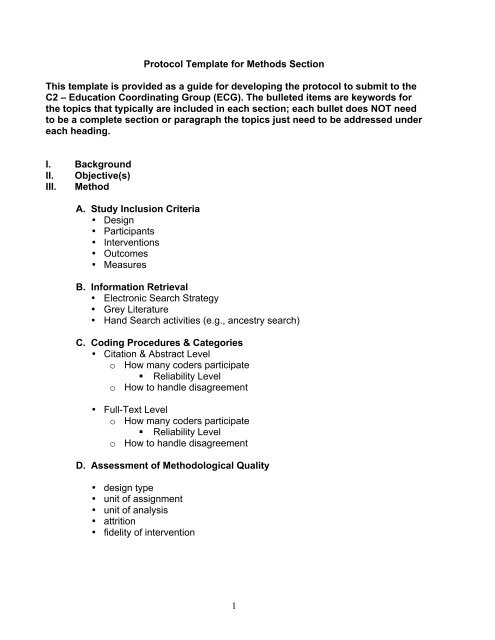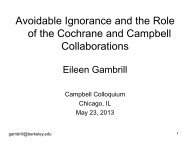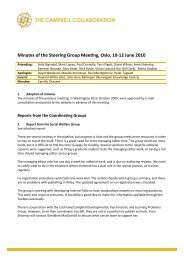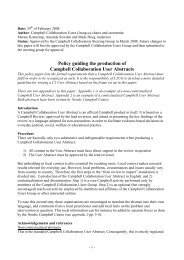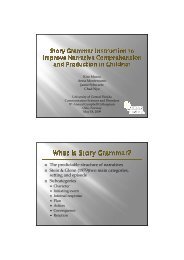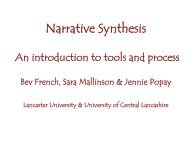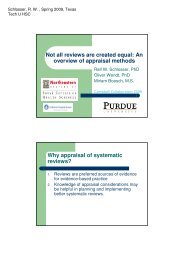Protocol Template for Methods Section - The Campbell Collaboration
Protocol Template for Methods Section - The Campbell Collaboration
Protocol Template for Methods Section - The Campbell Collaboration
You also want an ePaper? Increase the reach of your titles
YUMPU automatically turns print PDFs into web optimized ePapers that Google loves.
<strong>Protocol</strong> <strong>Template</strong> <strong>for</strong> <strong>Methods</strong> <strong>Section</strong>This template is provided as a guide <strong>for</strong> developing the protocol to submit to theC2 – Education Coordinating Group (ECG). <strong>The</strong> bulleted items are keywords <strong>for</strong>the topics that typically are included in each section; each bullet does NOT needto be a complete section or paragraph the topics just need to be addressed undereach heading.I. BackgroundII. Objective(s)III. MethodA. Study Inclusion Criteria• Design• Participants• Interventions• Outcomes• MeasuresB. In<strong>for</strong>mation Retrieval• Electronic Search Strategy• Grey Literature• Hand Search activities (e.g., ancestry search)C. Coding Procedures & Categories• Citation & Abstract Levelo How many coders participate Reliability Levelo How to handle disagreement• Full-Text Levelo How many coders participate Reliability Levelo How to handle disagreementD. Assessment of Methodological Quality• design type• unit of assignment• unit of analysis• attrition• fidelity of intervention1
E. Calculating Effect Size• calculation of effect size using1. Standardized Mean Difference Statistic (d-index• means & standard deviations (Cohen’s d)• F test, t test, p value, proportions• Inverse mean variance <strong>for</strong> weighting• correction <strong>for</strong> small sample size (Hedges g)2. Confidence Interval3. Odds Ratio Family (including risk difference and risk ratio if you think thismight be in data <strong>for</strong> your review)F. Synthesis of Effect Sizes1. Within Study Synthesis• overall study effect size• individual study effect size• aggregate across studies using single study effect size• multiple effect sizes from a single study• aggregating same outcome effect size across studies2. Across Study Synthesis• Aggregation of conceptually similar outcomes• No aggregation of two different outcome effect sizes from samestudy3. Heterogeneity Analysis• Choice, use, and rationale of fixed effects or random effects model4. Sensitivity Analysis• assessment of the impact of a single study on the magnitude of anoverall effect size• impact moderating variables (e.g., attrition, type of treatment,missing data, sample size, study design)5. Publication Bias• Impact of published vs unpublished included studies6. Incomplete Reporting of Study Data• Method of imputation1. Average of post-treatment mean of included studies2. Set to zero of included studies3. Average of pre-treatment mean of included studies2
7. Post Hoc Subgroup and Moderator Analyses• Analyze impact of specific subsets or study moderators such as1. Types of Treatment2. Severity Level3. Efficacy vs. Effectiveness studies4. Intention to Treat vs. Active Treatment only5. Age of Participant6. Length of TreatmentRevised 11/083


